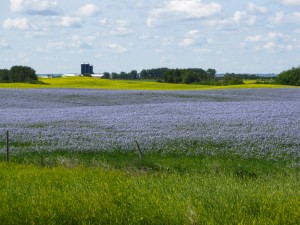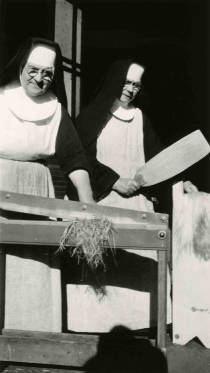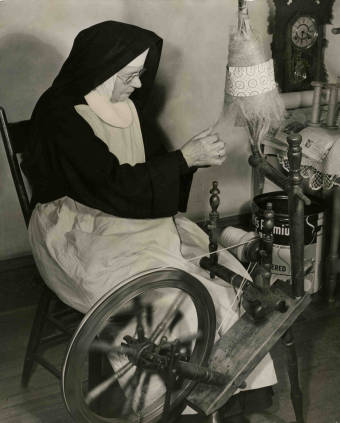 Last year, some folks at the college planted a field of flax with the intention of using the fiber to make paper. The paper hasn’t been made yet, but the artist in residence mentioned to me that they were looking for text to put on the paper once it’s made. This is why artists–particularly letterpress artists, printmakers and paper makers–and poets need to stay close to each other! It’s like the girl with the roller skates and the other one with the key. She thought maybe there was material somewhere for a 100-word story.
Last year, some folks at the college planted a field of flax with the intention of using the fiber to make paper. The paper hasn’t been made yet, but the artist in residence mentioned to me that they were looking for text to put on the paper once it’s made. This is why artists–particularly letterpress artists, printmakers and paper makers–and poets need to stay close to each other! It’s like the girl with the roller skates and the other one with the key. She thought maybe there was material somewhere for a 100-word story.
Wednesday I picked up a folder of material from Sister Moira Wild at the Haehn Museum at Saint Benedict’s Monastery. What a treasure trove!
What I knew about flax before came from the novel Red Earth, White Earth by Will Weaver, who also wrote the story that became the film Sweetland. In this novel, a young man grows a large crop of flax, despite everyone’s protestations and misgivings. Flax fields in bloom are quite beautiful, because they have blue flowers. They are difficult to harvest, because the stalks gum up the machinery and are hard to cut. In the end, though only after soaking, beating and stripping the stuff to its innermost fiber, you can use the fibers for weaving cloth (or paper). And flax seed is all the rage now for its nutritional benefits. In these documents it was noted to be good for animal feed, but also “medicinal purposes.”
Two young women, Petrina and Albina Hoeft, came to the United States from Bavaria in 1893 and 1894 and joined the monastery in the fall of 1894. By 1904, Petrina was growing a quarter-acre plot of flax and processing it into fine (and not so fine) linen. Sister Albina joined her a decade later and the two women grew and processed flax until 1944, shortly before their deaths. The goal was to sell the seed and make altar cloths and vestments from the finest linen, while coarser stuff was used for towels and doilies and other household woven items. One document noted that they didn’t have much luck with bleaching it, aside from the ordinary bleaching that came from washing and use.
After their deaths, no one took up the craft, and when you read about the process, it’s no wonder at all!
Here is a text, translated by Sister Margretta Nathe, OSB, from a German document in the monastery’s archives, which explains the process:
In the spring of the year, flax is seeded in soil fertilized with hog manure and free of weeds.
Regular cultivation prevents weeds from choking the tender stalks.
A field of flax in bloom is a glorious sight!
When the blue blossoms have fallen off and the seed has ripened, the plants are pulled by hand from the soil.
The seeds are left to dry, while the stalks, tied in bundles, are submerged in Lake Sarah, held down by boards and stones, and left to soften.
After several days, they are spread on a stubble field—away from the grazing cows—for bleaching.
Six weeks later, bleached and thoroughly dried, it is taken up, stored, and then finally processed:
It is thoroughly beaten with a flail, producing the tow spun into coarse linen thread, useful to tie up parcels, but not fine enough for linen.
The remaining fine and long fibers are tied into soft white bundles and spun into fine linen thread.
Only very long strands of flax can be spun into linen thread and then woven into fine white linen.
Flax seed is dried, ground, and used as fodder. A great deal of flax seed is used for medicinal purposes—poultices especially.
Saint Benedict’s Monastery, 1940 (?)
photos from Vivarium, Sisters of the Order of Saint Benedict, St. Joseph, Minn.

Dressing the altar at the 1983 dedication of Sacred Heart Chapel with linen altar cloth made in 1920 by Sisters Petrina and Albina Hoeft




